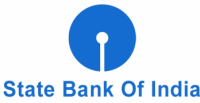Second Bi-monthly Monetary Policy Statement for 2018-19 : RBI
Want to Become a Bank, Central / State Govt Officer in 2020?
Join the Most awarded Coaching Institute & Get your Dream Job


Now Prepare for Bank, SSC Exams from Home. Join Online Coure @ lowest fee
Lifetime validity Bank Exam Coaching | Bank PO / Clerk Coaching | Bank SO Exam Coaching | All-in-One SSC Exam Coaching | RRB Railway Exam Coaching | TNPSC Exam Coaching | KPSC Exam Coaching
Second Bi-monthly Monetary Policy Statement for 2018-19 : RBI
Dear Bankersdaily Aspirants,
The Reserve Bank of India, the apex banking institution of all the banks in India have released the 2nd Bi Monthly Policy for the Financial year 2018-2019. The RBI’s Monetary Policy committee(MPC) decides the Bi-Monthly Policy. The rates are increased first time since January 2014, in about four-and-a-half-years, to 6.25%. So this is the first hike in Rates by RBI in the Narendra Modi period.
Dr. Chetan Ghate, Dr. Pami Dua, Dr. Ravindra H. Dholakia, Dr. Michael Debabrata Patra, Dr. Viral V. Acharya and Dr. Urjit R. Patel voted in favour of the decision. The minutes of the MPC’s meeting will be published by June 20, 2018. The next meeting of the MPC is scheduled on July 31 and August 1, 2018.
Monetary policy is the process by which monetary authority of a country, generally central bank controls the supply of money in the economy by its control over interest rates in order to maintain price stability and achieve high economic growth. In India, the central monetary authority is the Reserve Bank of India (RBI). It is so designed as to maintain the price stability in the economy.
Here we are with an elaborate list of the changed rates and we are sure this will help you in the preparations for the examinations.
Why RBI Reviews Monetary Policies Bi Monthly ?
As you all know this is the 3rd Bi Monthly Monetary Policy for the year 2017 – 2018.
- Monetary policy is flexible and can be changed easily
- The effect of monetary policy is faster and more immediately perceptible than the fiscal policy.
Monetary Policy Committee
The Monetary Policy committee is assigned the greatest task of fixing the Repo rate required to contain inflation in the specified targeted level. The Reserve Bank of India Act, 1934 (RBI Act) was amended by the Finance Act, 2016, to provide for a statutory and institutionalized framework for a Monetary Policy Committee for maintaining price stability , while considering the objective of growth.
Total Members of the Monetary Policy Committee : 6
Members from the RBI – 3
Other Members of the Monetary Policy Committee – 3 *
* These members will be appointed by the Central Government.
Members Of The Monetary Policy Committee :
- Dr. Chetan Ghate
- Dr. Pami Dua
- Dr. Ravindra H. Dholakia
- Dr. Michael Debabrata Patra
- Dr. Viral V. Acharya
- Dr. Urjit R. Patel
| Policy Rate | Current |
| Repo Rate | 6.25 |
| Reverse Repo Rate | 6.0 |
| Marginal Standing Facility | 6.50 |
| Bank Rate | 6.50 |
| CRR | 4 |
| SLR | 19.5% |
There are several direct and indirect instruments that are used for implementing monetary policy.
Repo Rate
The (fixed) interest rate at which the Reserve Bank provides overnight liquidity to banks against the collateral of government and other approved securities under the liquidity adjustment facility (LAF).
Reverse Repo Rate
The (fixed) interest rate at which the Reserve Bank absorbs liquidity, on an overnight basis, from banks against the collateral of eligible government securities under the LAF.
Liquidity Adjustment Facility (LAF)
- The LAF consists of overnight as well as term repo auctions. Progressively, the Reserve Bank has increased the proportion of liquidity injected under fine-tuning variable rate repo auctions of range of tenors.
- The aim of term repo is to help develop the inter-bank term money market, which in turn can set market based benchmarks for pricing of loans and deposits, and hence improve transmission of monetary policy.
- The Reserve Bank also conducts variable interest rate reverse repo auctions, as necessitated under the market conditions.
Marginal Standing Facility (MSF)
A facility under which scheduled commercial banks can borrow additional amount of overnight money from the Reserve Bank by dipping into their Statutory Liquidity Ratio (SLR) portfolio up to a limit at a penal rate of interest. This provides a safety valve against unanticipated liquidity shocks to the banking system.
Corridor
The MSF rate and reverse repo rate determine the corridor for the daily movement in the weighted average call money rate.
Bank Rate
It is the rate at which the Reserve Bank is ready to buy or rediscount bills of exchange or other commercial papers. The Bank Rate is published under Section 49 of the Reserve Bank of India Act, 1934. This rate has been aligned to the MSF rate and, therefore, changes automatically as and when the MSF rate changes alongside policy repo rate changes.
Cash Reserve Ratio (CRR)
The average daily balance that a bank is required to maintain with the Reserve Bank as a share of such per cent of its Net demand and time liabilities (NDTL) that the Reserve Bank may notify from time to time in the Gazette of India.
Statutory Liquidity Ratio (SLR)
The share of NDTL that a bank is required to maintain in safe and liquid assets, such as, unencumbered government securities, cash and gold. Changes in SLR often influence the availability of resources in the banking system for lending to the private sector.
Open Market Operations (OMOs)
These include both, outright purchase and sale of government securities, for injection and absorption of durable liquidity, respectively.
Market Stabilisation Scheme (MSS)
This instrument for monetary management was introduced in 2004. Surplus liquidity of a more enduring nature arising from large capital inflows is absorbed through sale of short-dated government securities and treasury bills. The cash so mobilised is held in a separate government account with the Reserve Bank.
Important Assessments from 2nd Bi-Monthly MPC 2018-2019
- Global economic activity has continued to expand.
- Global trade growth has continued to strengthen.
- Base metal prices, especially aluminium, have risen on account of US sanctions on Russia.
- Gross domestic product (GDP) growth for 2017-18 has been estimated at 6.7 per cent, up by 0.1 percentage point from the second advance estimates released on February 28.
- On a quarterly basis, agriculture growth increased sharply in Q4:2017-18.
Attend Important Banking Awareness Quiz and enhance you preparation level and try to score full marks in the upcoming exams.
SOUTH INDIAN BANK PO CURRENT AFFAIRS QUIZ – SET 5
SOUTH INDIAN BANK PO CURRENT AFFAIRS QUIZ – SET 4
SOUTH INDIAN BANK PO CURRENT AFFAIRS QUIZ – SET 3
SOUTH INDIAN BANK PO CURRENT AFFAIRS QUIZ – SET 2
SOUTH INDIAN BANK PO CURRENT AFFAIRS QUIZ – SET 1




